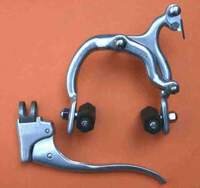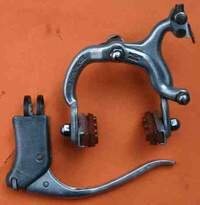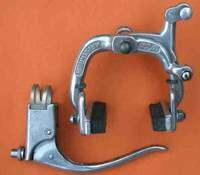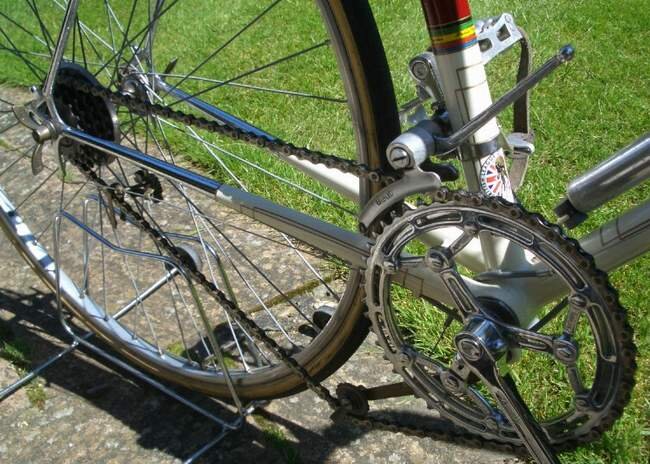You are using an out of date browser. It may not display this or other websites correctly.
You should upgrade or use an alternative browser.
You should upgrade or use an alternative browser.
Best of British (Components)
- Thread starter Canuk
- Start date
New one for me . Never even seen a picture.Wedgelock Cotterless cranks, were made in the West Hants/Dorset area in the early 1950’s. The cranks were alloy, and a long bolt ran through the bottom bracket, the axle being cut with wedge ends, hence the name.
Wedgelock cranks were made in Horsham in the late 50s, I think in Moons Lane. I have seen a few over the years but no information on how good they were. They did advertise, in Cycling weekly.
bikeworkshop
Old School Grand Master
Canuk
Senior Retro Guru
I can't find them even in the Holdsworthy catalogues. Someone is bound to have one though, surely?New one for me . Never even seen a picture.
bikeworkshop
Old School Grand Master
New one for me . Never even seen a picture.
Got one in the basement, never knew any detail. I'll see if i can find it and post a picture.
Canuk
Senior Retro Guru
Excellent work!Got one in the basement, never knew any detail. I'll see if i can find it and post a picture.
Canuk
Senior Retro Guru
'A new derailleur gear is shortly to be marketed by the Constrictor Tyre Co. (Nursery Lane Works, Forest Gate, London E.7). It is to be known as the Constrictor Osgear Super Champion, the name ‘Osgear’ being a rearrangement of all but two letters of Oscar Egg, the famous Swiss-French cyclist, who is responsible for the design. The Constrictor concern has secured the sole British rights to market this device, and it is possible that, in the near future, the whole of the parts of the Osgear will be made in this country.
Its construction is light yet sturdy, and it is simple in operation. The rear hub carries a triple cog free-wheel, a thin circular metal plate being fitted inside the sprockets to protect the spokes from any excessive chain jump. Fitted to the chainstay is a guide arm, cable operated, that moves the chain right or left, as the case may be, in line with the selected sprocket.'
Just behind the bracket is positioned the tensioning arm, that takes up the slack of the chain, the amount of which varies according to which sprocket is in use. The little pulley-wheel on this tensioning arm is mounted on ball bearings, but is without teeth, there being a guide-loop of metal to keep the chain in position. Fixed with a clip to the seat tube is another inverted “U” guide as an additional precaution to prevent the chain from jumping off the chain-wheel during a gear change.
Its construction is light yet sturdy, and it is simple in operation. The rear hub carries a triple cog free-wheel, a thin circular metal plate being fitted inside the sprockets to protect the spokes from any excessive chain jump. Fitted to the chainstay is a guide arm, cable operated, that moves the chain right or left, as the case may be, in line with the selected sprocket.'
Just behind the bracket is positioned the tensioning arm, that takes up the slack of the chain, the amount of which varies according to which sprocket is in use. The little pulley-wheel on this tensioning arm is mounted on ball bearings, but is without teeth, there being a guide-loop of metal to keep the chain in position. Fixed with a clip to the seat tube is another inverted “U” guide as an additional precaution to prevent the chain from jumping off the chain-wheel during a gear change.
Similar threads
- Replies
- 8
- Views
- 619
- Replies
- 1
- Views
- 694
- Replies
- 6
- Views
- 3K





